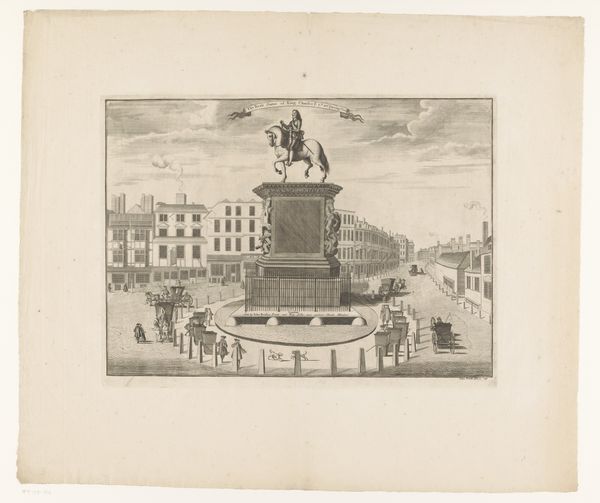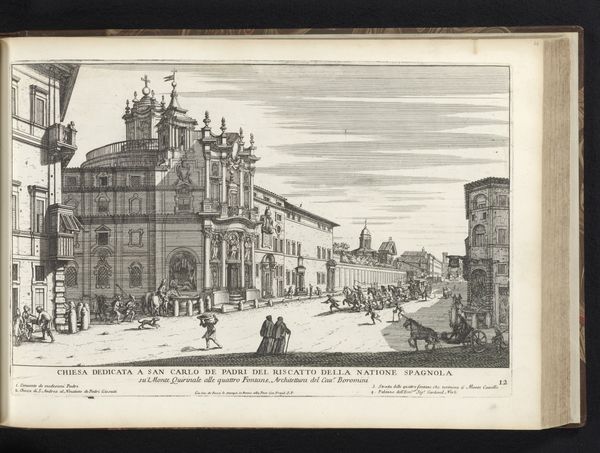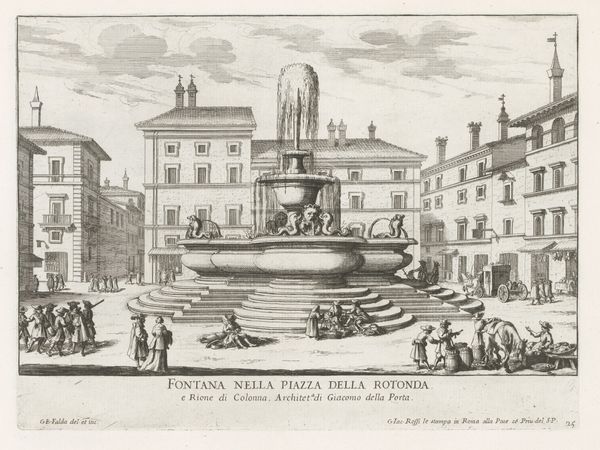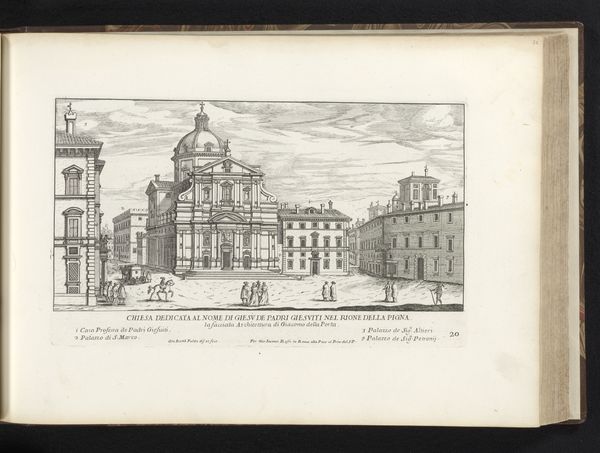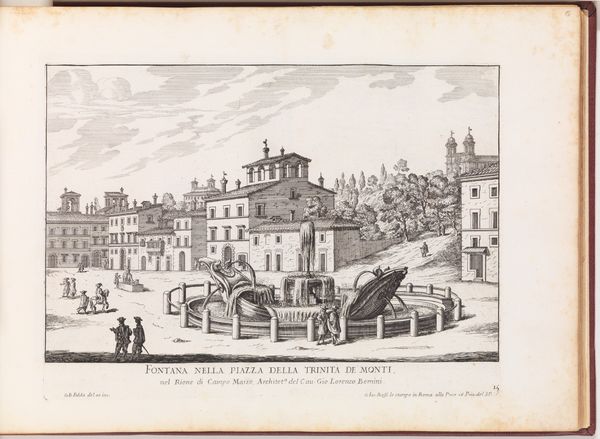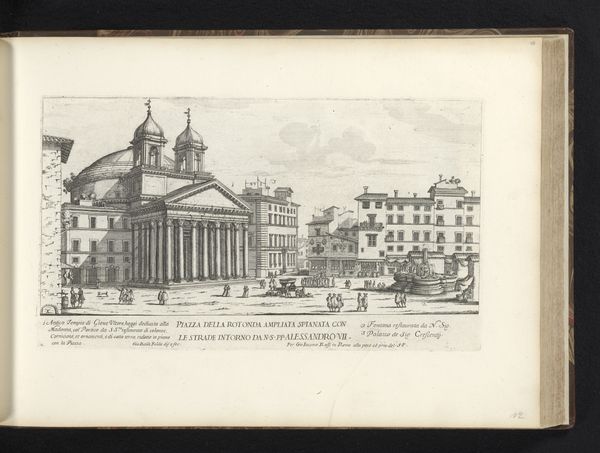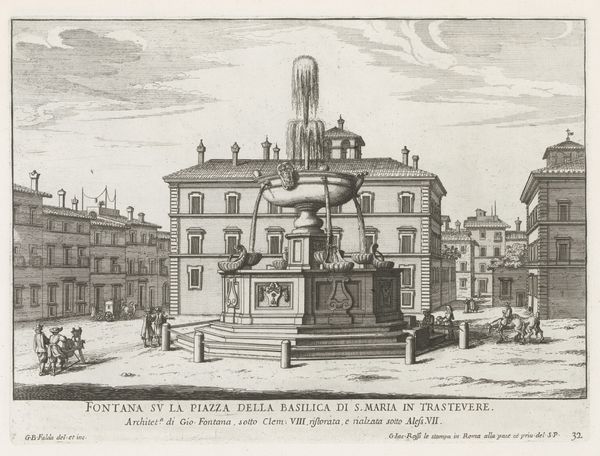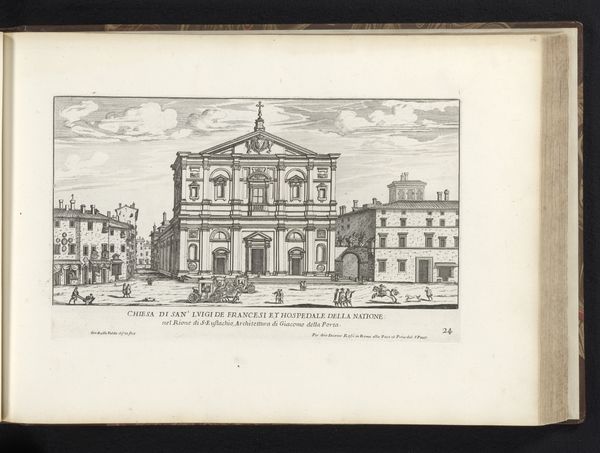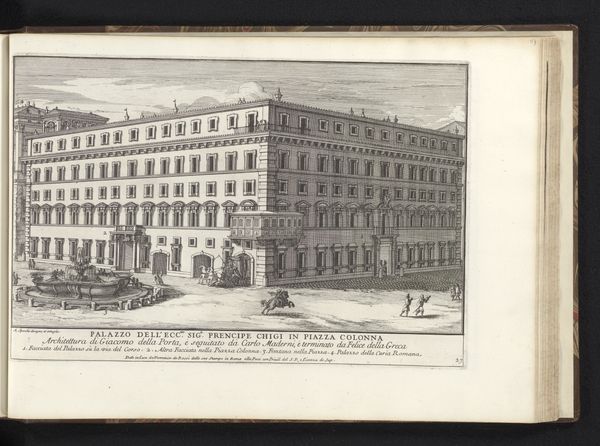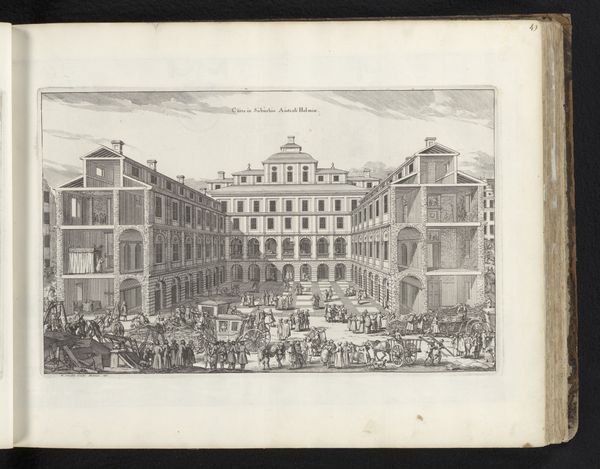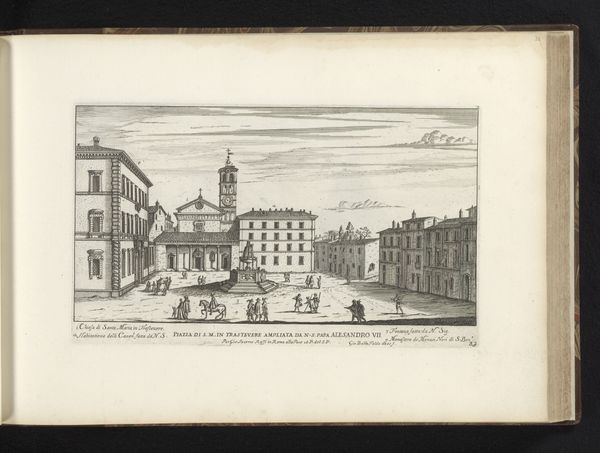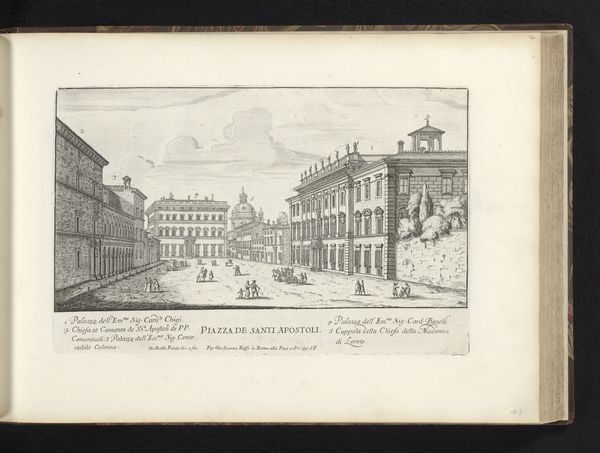![Fontana in Piazza Navona [Fontana del Moro], from "La Fontane di Roma nelle Piazze e Luoghi Publici (...)" by Giovanni Battista Falda](/_next/image?url=https%3A%2F%2Fd2w8kbdekdi1gv.cloudfront.net%2FeyJidWNrZXQiOiAiYXJ0ZXJhLWltYWdlcy1idWNrZXQiLCAia2V5IjogImFydHdvcmtzLzU4MDIzMGRjLTMwYmMtNDhmZi04OWQ3LTg5ZjQyMzA3YzUwMi81ODAyMzBkYy0zMGJjLTQ4ZmYtODlkNy04OWY0MjMwN2M1MDJfZnVsbC5qcGciLCAiZWRpdHMiOiB7InJlc2l6ZSI6IHsid2lkdGgiOiAxOTIwLCAiaGVpZ2h0IjogMTkyMCwgImZpdCI6ICJpbnNpZGUifX19&w=3840&q=75)
Fontana in Piazza Navona [Fontana del Moro], from "La Fontane di Roma nelle Piazze e Luoghi Publici (...)" 1691
0:00
0:00
drawing, print, paper, engraving
#
drawing
#
baroque
# print
#
landscape
#
paper
#
cityscape
#
engraving
#
building
Dimensions: Plate: 8 1/4 x 11 1/4 in. (21 x 28.6 cm)
Copyright: Public Domain
Curator: Here we have Giovanni Battista Falda's engraving from 1691, titled "Fontana in Piazza Navona," part of a series documenting Roman fountains. Editor: My first impression is how bustling and almost performative the space seems, despite the stoic architecture. There is a real sense of everyday spectacle depicted. Curator: Indeed. Look at the technical skill required to produce this image via engraving. Consider the copperplate, the precise application of the burin to capture not just the likeness of the fountain, but the atmosphere of Piazza Navona. It's a testament to the engraver's labour and mastery. Editor: Absolutely, and let's contextualize Piazza Navona itself, commissioned by Pope Innocent X, as a symbolic power move by the Pamphili family. The fountain then, is not just decorative, but also a representation of papal authority over public space, influencing citizen life with carefully-engineered symbolism. Curator: Precisely. The engraving process mirrors this: the pressure, the cutting— a controlled manipulation of material to yield an image with social impact. Furthermore, the print itself would have been circulated, consumed as a commodity, spreading the image of Roman power and beauty across Europe. Editor: And we have to ask, who had access to this print? Who was being invited into this view of Roman grandeur? Consider how this visual representation reinforces a hierarchical society, excluding the labouring classes even from its imagined ideal. Curator: A fair point. Though one could also argue these images allowed broader segments of the populace to access Roman culture beyond immediate visitors. The means of producing the art democratizing its image, somewhat divorced from its direct political purposes on-site. Editor: It’s that tension—between artistic production enabling representation and access, versus it reproducing power structures—that makes engaging with such historical works important. Curator: Definitely. It's crucial to delve into the artist's role as both craftsperson and conveyer of symbolic meaning. We mustn't disregard the physical means through which cultural capital is both produced and then disseminated. Editor: For me, artworks like this push us to reflect on public space itself: who it serves, what it signifies, and whose stories get told—or erased—in the process of shaping it. Curator: Yes, and through material analysis, we've teased out broader production systems in Baroque Rome, with echoes into contemporary practice. Editor: And considered what part these material productions take in reinforcing both social hierarchies and identity constructions within these grand urban vistas.
Comments
No comments
Be the first to comment and join the conversation on the ultimate creative platform.
